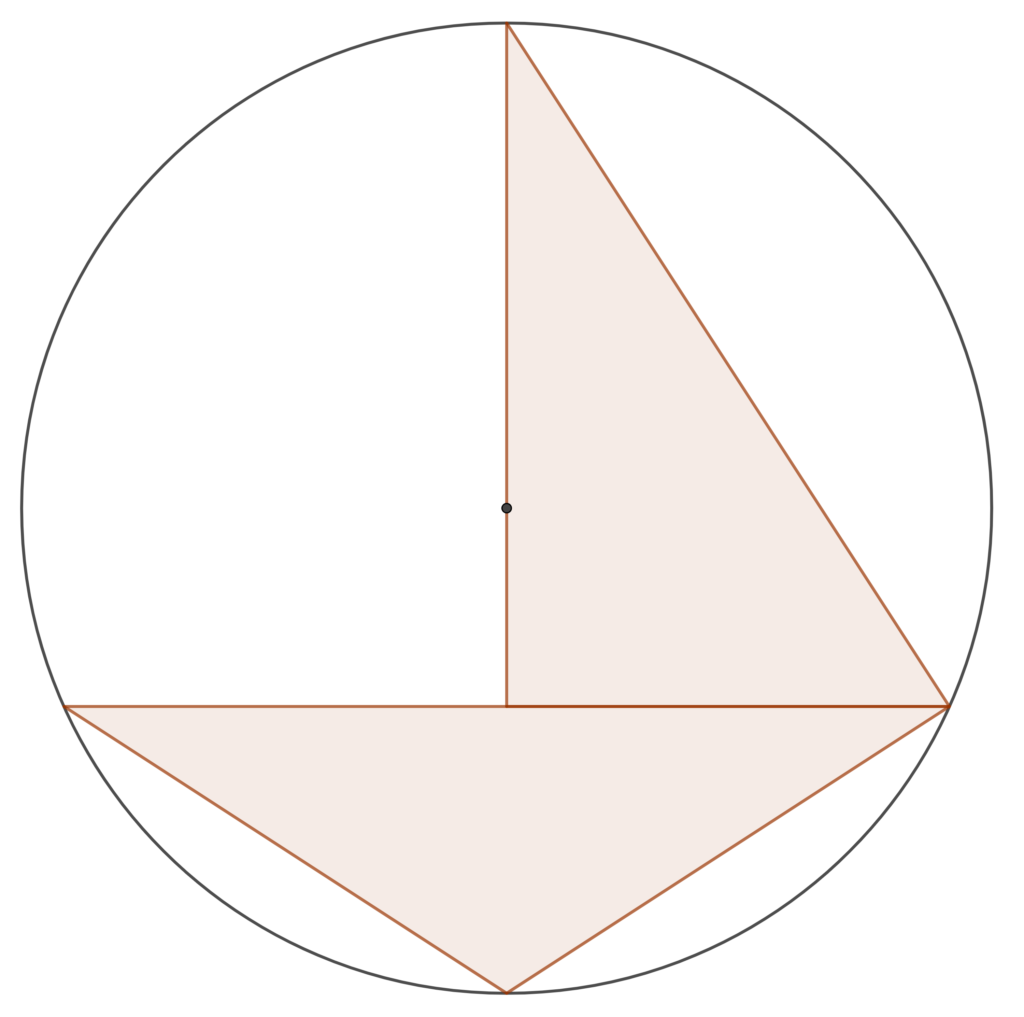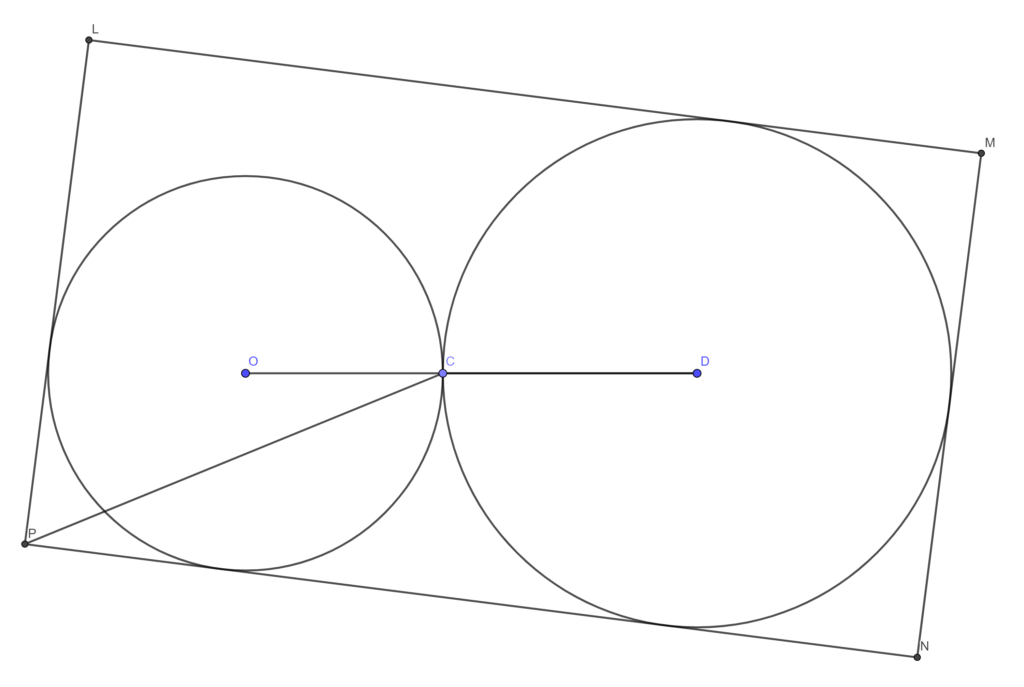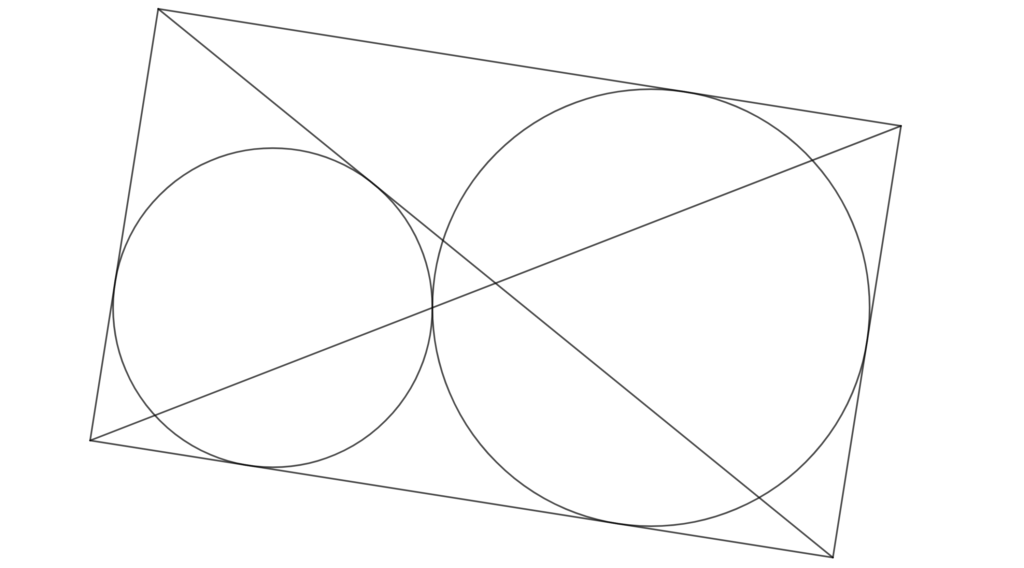In this geometry problem an isosceles triangle and a right-angled triangle are inscribed in a circle. When you have solved the problem the answer may surprise you, as it has a connection to number theory. The short side of the right-angled triangle has length one and it is coincident with half of the base of the isosceles triangle which has length two. The constraint that defines the problem is that the perimeters of the two triangles are equal. What are the lengths of the other sides and what is the radius of the circle? The diagram shows that the right-angled corner is at the midpoint of the base of the isosceles triangle and that the centre of the circle is a point on the perpendicular side of the right angled triangle.


